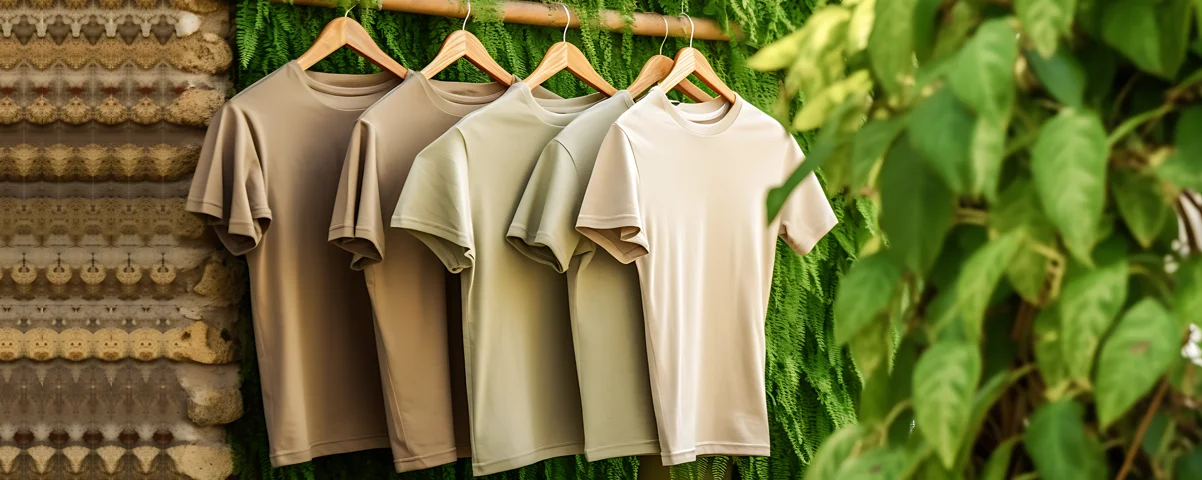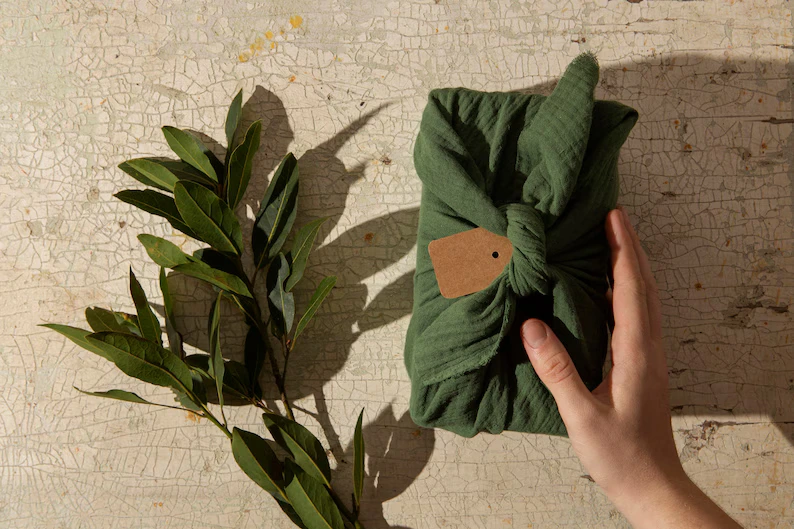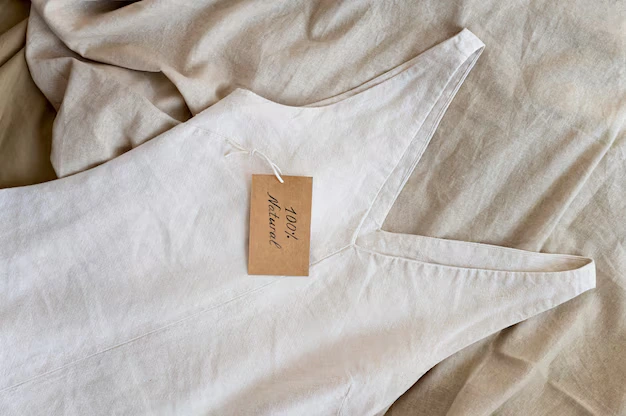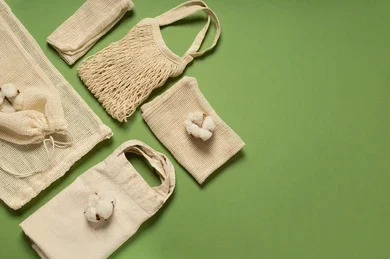
How to Start a Sustainable Clothing Brand in India
By Ketul
Updated 30 Jan, 2025
10 min read

Contents
The sustainable fashion movement has taken the world by storm, with eco-conscious consumers increasingly opting for clothing that aligns with their values. In India, a country with a rich textile heritage and a growing awareness of environmental issues, the market for sustainable fashion is rapidly expanding. Whether you’re passionate about reducing waste, supporting ethical practices, or promoting eco-friendly fabrics, learning how to start a clothing brand focused on sustainability in India presents an exciting opportunity to positively impact both the planet and the people who wear your creations.
This guide will take you through the essential steps of setting up your sustainable clothing business, from market research and material selection to online and offline strategies, legal certifications, and lessons from successful brands. By the end, you’ll have a clear roadmap to help turn your vision of a sustainable fashion brand into a reality. Let’s dive in!
India’s Sustainable Fashion Market: The Overview
Understanding the market is the first step. India’s fashion industry is evolving, with more consumers opting for eco-friendly and ethically produced clothing. If you’re wondering how to start a clothing brand in this growing sector, key factors to research include:
- Target Audience: Identify demographics that align with sustainable fashion, such as millennials and Gen Z. These groups are more likely to support brands that prioritize sustainability and ethical practices. Conduct surveys, focus groups, and online research to understand their preferences, buying behaviors, and willingness to pay a premium for sustainable products.
- Competitor Analysis: Study established brands like B Label, No Nasties, and Doodlage. Analyze their product offerings, pricing strategies, marketing campaigns, and customer reviews. This helps you identify gaps in the market and unique selling points (USPs) for your brand.
- Market Size: Assess the growth potential of India’s sustainable fashion market. While the segment is growing, price sensitivity among Indian consumers can be a challenge. Offer a mix of affordable and premium options to cater to diverse income groups.
- Consumer Behavior: Emphasize storytelling and transparency in your marketing. Consumers value brands that share their sustainability journey and showcase the positive impact of their products.

Identifying the Right Sustainable Fabrics for Your Brand
Choosing the right materials is at the core of sustainability when learning how to start a clothing brand. Consider the following options and their benefits:
- Organic Cotton: Grown without harmful pesticides and synthetic fertilizers, organic cotton is eco-friendly and comfortable. It’s ideal for T-shirts, dresses, and kids’ clothing.
- Hemp: Known for its durability and breathability, hemp requires minimal water and pesticides to grow. It’s suitable for a wide range of products, including casual wear and accessories.
- Recycled Fabrics: These fabrics are created by repurposing waste materials such as PET bottles or old garments. They help reduce waste and conserve resources, making them perfect for activewear and outdoor gear.
- Tencel/Lyocell: Made from wood pulp, Tencel is biodegradable, sustainable, and incredibly soft. It works well for high-end clothing and bedding.
- Ahimsa Silk: Also known as peace silk, Ahimsa Silk is produced without harming silkworms, making it a cruelty-free alternative for luxury garments.
How to Source Sustainable Materials in India
Collaborating with reputed suppliers ensures the authenticity of your materials when figuring out how to start a clothing brand. Some notable providers in India include:
- FabIndia: Renowned for sourcing eco-friendly and traditional fabrics, FabIndia collaborates with artisans across India.
- Avani Kumaon: Specializes in natural dyes and handwoven textiles, promoting rural employment and sustainability.
- Charaka Women’s Cooperative Society: Offers organic cotton and handloom textiles, empowering women artisans.
When selecting suppliers for how to start a clothing brand, look for certifications such as GOTS (Global Organic Textile Standard) or Fair Trade to verify the sustainability of their practices. Build long-term relationships with suppliers to ensure consistent quality and availability.
Eco-Friendly Dyeing Techniques to Reduce Environmental Impact

Traditional dyeing methods often involve harmful chemicals that pollute water and harm the environment. When learning how to start a clothing brand, opt for sustainable alternatives such as:
- Natural Dyes: Extracted from plants, fruits, and minerals, natural dyes are biodegradable and safe for the environment. They work well for earthy tones and pastel shades.
- Azo-Free Dyes: Avoid dyes containing azo compounds, which release harmful substances during breakdown. Azo-free dyes are vibrant and safer for both workers and consumers.
- Waterless Dyeing Technologies: Technologies like AirDye use air instead of water to apply dye, significantly reducing water consumption.
Partner with dyeing units known for their eco-friendly practices. Regions like Jaipur and Ahmedabad are famous for their sustainable dyeing techniques.
Legal Certifications and Compliance
To establish credibility and comply with regulations, secure the following certifications:
- GOTS Certification: Guarantees that textiles are organic and meet environmental and social criteria.
- Fair Trade Certification: Ensures ethical labor practices and fair wages for workers.
- ISO 14001: Focuses on environmental management systems to minimize your ecological footprint.
- India Handloom Brand: Authenticates traditional Indian handloom products, adding value to your brand.
Additionally, adhere to labor laws, such as the Minimum Wages Act and the Factories Act, to ensure fair treatment of workers. Stay updated with environmental regulations to avoid legal complications.
Setting Up Your Sustainable Clothing Business: Steps
Starting a sustainable clothing business involves much more than just creating a product—it’s about creating a brand that reflects your values and connects with consumers who care about the environment. Below are the essential steps on how to start a clothing brand in India:
1. Research and Market Analysis
Before diving into production, research is crucial. Understand the current state of the sustainable fashion industry in India, and explore the market dynamics, demand, and competitors. Look for market gaps and ways your brand can stand out. Analyze consumer behavior, particularly among eco-conscious millennials and Gen Z, who are leading the sustainable fashion movement.
2. Business Model and Strategy
Decide whether you want to build a direct-to-consumer (DTC) brand via e-commerce, open a brick-and-mortar store, or combine both. Each model has its advantages:
- DTC/E-commerce: This model enables a broader reach, especially through platforms like Shopify, WooCommerce, or specialized eco-friendly marketplaces.
- Physical Store: A retail presence in metro cities can build trust and provide an immersive brand experience. Consider eco-conscious store designs, like using recycled materials for store interiors.
- Hybrid Model: Many sustainable brands find success with a combination of both online and offline strategies, leveraging the reach of e-commerce and the credibility of physical stores.
3. Brand Positioning and Identity
Your brand identity will shape how you communicate with consumers. Clearly define your brand’s mission, vision, and unique selling proposition (USP). A compelling brand story is vital, especially for sustainable brands. Consumers resonate with businesses that share their journey towards sustainability. Highlight your commitment to ethical sourcing, eco-friendly materials, and transparency in production.
4. Material Sourcing and Partnerships
The next step is to source the sustainable materials needed to create your products. As discussed earlier, organic cotton, hemp, Tencel, and recycled fabrics are popular choices. Establish relationships with reliable suppliers that align with your brand’s values. Look for certifications such as GOTS or Fair Trade to ensure ethical sourcing practices.
You can explore collaborations with local cooperatives, such as the Charaka Women’s Cooperative Society, which offers organic cotton and supports local artisans. These partnerships will not only help you access high-quality sustainable materials but also foster a sense of community and social responsibility.
5. Product Design and Production
Once you’ve selected your materials, it’s time to design your product line. Sustainability doesn’t just mean using eco-friendly fabrics; it extends to your product designs. Aim for timeless, durable designs rather than fast-fashion trends. Create versatile pieces that can be styled in multiple ways, promoting longevity over disposability.
When it comes to production, work with local artisans and small manufacturers who understand sustainable practices. Avoid large-scale factories that may not prioritize ethical labor practices or environmental concerns.
6. Building an Online Store
A user-friendly, attractive website is essential for your online presence. Opt for platforms like Shopify, WooCommerce, or BigCommerce that support sustainable fashion brands. Your online store should include:
- Detailed Product Pages: Share information about the materials, their origin, and why they are eco-friendly.
- Visual Storytelling: Use high-quality images and videos that showcase your products and the sustainable processes behind them.
- Transparency: Consider creating a dedicated section that tells the story of your brand’s journey, including your sustainability goals and how your products are made.
Focus on building a strong SEO strategy to rank for relevant keywords, such as “sustainable clothing in India” or “organic cotton fashion.” This will help drive organic traffic to your website.

7. Social Media and Content Marketing
Social media platforms like Instagram, Facebook, and Pinterest are invaluable for building an eco-conscious brand. Share content that educates your audience about sustainable fashion and your brand’s journey. Post behind-the-scenes content, such as sourcing material, working with artisans, or the production process. This transparency builds trust with consumers.
Engage with influencers in the sustainable fashion space to amplify your message and increase brand visibility. Collaborate with content creators who resonate with your target audience to widen your reach.
8. Legal Compliance and Certifications
To ensure your business is legitimate and trustworthy, obtaining the necessary certifications is important. GOTS (Global Organic Textile Standard) and Fair Trade certifications are crucial for ensuring your products are truly sustainable and ethically produced. These certifications will help you gain consumer trust and make your brand stand out in a competitive market.
Additionally, you’ll need to comply with India’s business laws, including registering your business, obtaining GST registration, and following environmental regulations for waste disposal and production. Keep yourself updated with any changes in regulations related to sustainability.
9. Launch and Marketing Strategy
Planning a successful launch is key to gaining initial traction. Consider hosting pop-up events or online launches that highlight your brand’s commitment to sustainability. You could offer limited edition collections or special promotions for early supporters.
Your marketing strategy should focus on the values that define your brand: sustainability, ethics, and transparency. Use storytelling to connect with customers and highlight the positive impact their purchases will have on the planet.
10. Sustainability in Operations
Ensure sustainability is embedded in your day-to-day operations. From eco-friendly packaging to carbon-neutral delivery options, every part of your supply chain should reflect your commitment to sustainability. Partner with delivery services that prioritize green shipping or consider offering local delivery to reduce your carbon footprint.
Learn from The Best
Learning from successful brands offers valuable insights into strategies, challenges, and innovative approaches that can help your sustainable clothing business thrive in India’s competitive market.
| Brand Name | Region | Materials | Key Lessons |
|---|---|---|---|
| B Label by BOHECO | Mumbai, India | Hemp-based fabrics | Educating consumers about the multifunctionality of hemp and its environmental benefits has helped B Label stand out. |
| Doodlage | New Delhi, India | Recycled and upcycled fabrics | Creativity in using waste materials and offering unique designs has made Doodlage a leader in sustainable fashion. |
| No Nasties | Goa, India | 100% organic cotton | Transparency in the supply chain and storytelling have helped No Nasties build trust with their audience. |
What Can We Learn from Them?
As you navigate the journey of building your sustainable clothing business, it’s crucial to learn from the experiences of those who have already made an impact in the industry. Here are some valuable insights on how to start a clothing brand successfully:
- Focus on Transparency: Clearly communicate your sustainability practices to build trust with consumers.
- Innovate with Waste: Explore upcycling as a creative way to minimize waste and differentiate your products.
- Educate Consumers: Awareness campaigns and engaging content can help consumers understand the value of sustainable fashion.
- Expand Gradually: Start with a niche audience and expand your product line and market as your brand gains recognition.
Summing up
Launching a sustainable clothing business in India is both challenging and rewarding. If you’re wondering how to start a clothing brand with a focus on sustainability, blending traditional Indian textiles with modern eco-friendly practices is key. By focusing on ethical practices, quality materials, and impactful storytelling, you can create a brand that resonates with conscious consumers. With determination, creativity, and innovation, your sustainable clothing brand can make a positive impact on the planet and the people who choose your creations.
FAQs
1. How much does it cost to start a clothing business in India?
Starting a clothing business in India can cost anywhere from ₹5,00,000 to ₹10,00,000, depending on the scale and location.
2. Is the clothes business profitable in India?
Yes, the clothing business is profitable in India, with growing demand for both fast and sustainable fashion.
3. What are the 6 R's in making fashion sustainable?
The 6 Rs are reduce, reuse, recycle, repair, refuse, and reconsider, focusing on minimizing waste and adopting eco-friendly practices.
4. What license is required for a clothing brand in India?
To start a clothing brand, you need GST Registration, Trade License, Shops, Establishment Registration, and possibly Trademark and IEC Registration for importing or exporting.
Related articles


Revolutionising Waste Management: Producing Green Energy through Waste
